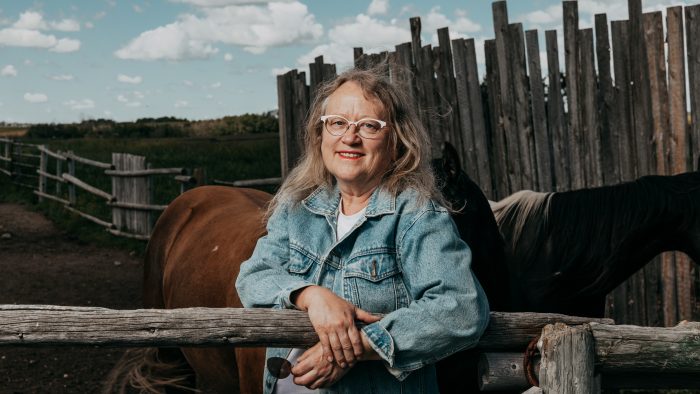CMF: 15 Years of Getting Things Done
Key industry figures reflect on the role the Canada Media Fund has played since its 2010 inception, and how it has become far more than just a funding body.
Since the creation of the Canada Media Fund (CMF) 15 years ago, the organization led by president and CEO Valerie Creighton has dedicated itself to serving our country’s audiovisual industry.
It hasn’t always been easy.
From the emergence of digital platforms and the explosion of streamers, to competition from foreign productions with massive budgets, the challenges have been numerous. The fact that the CMF’s budget has been shrinking in recent years doesn’t help.
Despite these challenges, the CMF has financed more than 19,000 linear, interactive digital, and industry development projects, generating more than $24 billion in economic impact for Canada’s GDP.
Here, those who witnessed the industry’s evolution firsthand share what the CMF has meant to them.
Read more: The story of the CMF told by Valerie Creighton
CMF and Canadian Identity
For Charles Lafortune, senior vice president, content and creation, at the independent television producer Pixcom, the Fund’s role goes beyond content financing — it directly impacts our identity.
“I’d even say that without the CMF, Canadian identity would take a real hit,” says Lafortune. “Thanks to the CMF, the industry in Canada has been able to create content that speaks to Canadians and reflects the issues they face.”
Lafortune gives the CMF extra points for not only surviving the arrival of digital platforms, which have transformed the industry over the past 15 years, but adapting to support this evolution.
More Than TV
The CMF is not just about television. The Fund also backs the audiovisual industry’s most innovative sectors — video games, virtual and augmented reality, and immersive and interactive content.
That wide range is something Prem Gill, CEO of Creative BC, an organization that supports British Columbia’s creative sector, likes to remind people of.
“That is a big part of what the CMF does,” says Gill. “Fuelling that innovation and that [innovative] thinking and creating that IP in different ways in Canada that, prior to the CMF existing, there wasn't a centralized place nationally that was really focused and looking at that.”
Reynolds Mastin, president and CEO of the Canadian Media Producers Association (CMPA), agrees. “Platform agnostic — I think that's one of the key strengths of the CMF. Yes, it’s about television, but it's also about every other platform in the ecosystem.”
Two Success Stories: Empathie and North of North
The funds to bring an idea to life are often scarce, but sometimes small miracles happen. Empathie is one of them.
Julia Langlois, partner and fiction producer at Empathie’s production company, Trio Orange, is thrilled their series about a criminologist-turned-psychiatrist has resonated here and abroad, even winning the Audience Award at the prestigious Séries Mania festival in Lille, France.
“The CMF gives creators wings,” she says. “It allows us to dream bigger, to enhance our budgets so that our series can compete internationally, and to ensure that production quality is reflected on screen. Without the CMF, our projects wouldn’t have the same momentum or scope needed to compete with other productions around the world.”
While applying to CMF programs is often seen as a complex process, Huw Eirug, CEO of the Nunavut Film Development Corporation, says he felt supported while developing the series now known as North of North, about a single Inuk mom navigating life in a small Arctic town.

“We go back to 2021, and the CMF gave funding through their performance envelope to APTN and CBC for a newly minted comedy series which was under the working title People,” he recalls. “And while CMF recognized the potential of the series, what we didn't know [is] that it would become the worldwide hit that is now known as North of North.”
Eirug says the CMF’s assistance went beyond monetary.
“Not only have we received support and encouragement from Valerie and the staff at CMF, but they've also taken the time to visit us [on set] in Iqaluit to understand the industry, the challenges we face. And they've been advocates and supporters to us throughout our history.”
Listening and Acting to Foster Change
Kerry Swanson, CEO of the Indigenous Screen Office (ISO), highlights the CMF’s willingness to listen.
“In the early stages, the CMF, and Val in particular, heard from Indigenous producers that we needed our own institution, an organization that was led by Indigenous people supporting Indigenous screen content in Canada, and she spearheaded bringing together broadcasters and funders to pull the money together to start the ISO. And we really needed that institutional champion for the ISO to come out of the gate strong, which we did.”
Creighton’s name comes up often.
Tonya Williams, founder and executive director of the Reelworld Screen Institute, recalls meeting her for the first time five years ago and being struck by her commitment to real change.
“She totally started about, how can we make changes? How can we make diversity more important? How can we make the policy changes that are needed?”
“I feel heard when I'm talking to her, and she doesn't try to placate me by saying what she thinks I want to hear. She actually does something that helps me.”
The CMPA’s Mastin agrees that the Fund must continue to champion underrepresented genres.
“Without the CMF, so many shows, so many dramas, documentaries, comedies — they simply wouldn't get made,” he says. “Great shows wouldn't get made.”



